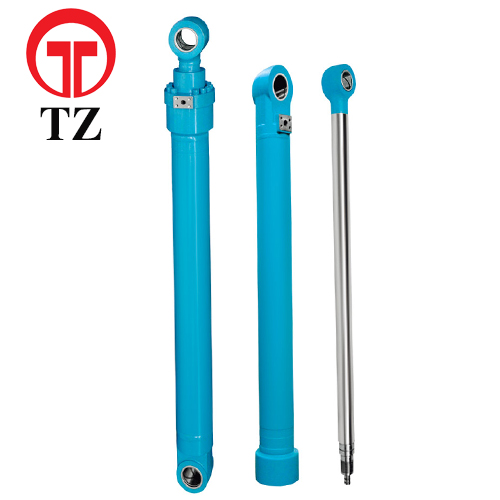Hydraulic cylinders are critical components that allow excavators to complete digging and loading tasks efficiently. The boom, braço, bucket and swing cylinders provide the power and motion needed for excavators to function. Proper assembly and maintenance of these cylinders is essential for optimum performance and longevity.
Proper hydraulic cylinder assembly excavator hydraulic boom cylinder, excavator hydraulic arm cylinder and BUCKET cylinder assembly is a must for efficient and reliable operation of hydraulic excavators.
Function Of Excavator Boom Cylinder
The boom cylinder is responsible for raising and lowering the boom arm. When pressurized hydraulic fluid enters one end of the cylinder, it extends the rod and piston, forcing the boom arm upward. Fluid entering the opposite end retracts the rod and piston, lowering the boom arm.
The boom cylinder relies on high-quality seals and rods to prevent fluid leakage and internal damage that can reduce its force-generating ability over time. Regular inspection of fittings, hoses and rod ends is important to detect issues early.
How Hydraulic Arm Cylinder Positioned
The arm cylinder is positioned between the boom arm and bucket, and controls the movement of the bucket. When the cylinder extends, the bucket is raised. When the cylinder retracts, the bucket is lowered.
The arm cylinder uses similar components and technologies as the boom cylinder. Correct alignment of rod ends, bushings and pins during assembly is critical to avoid premature wear and reduced performance. Solid construction is also important due to the heavier forces required for bucket operation.
Installation Of Bucket Cylinder Assembly
The bucket cylinder is mounted inside the excavator arm and connects directly to the bucket. Its primary function is to pivot the bucket for digging, dumping and positioning loads.
Properly assembled BUCKET cylinder assembly ensuring tightening of fittings and connections, precise alignment of rod ends, and functional seals and o-rings are essential. Regular inspections of hoses, rod condition, and pin and bushing wear can reveal issues before they become critical failures.
Rebuilding or replacing worn components such as piston seals, selos, rods and rod ends can restore full performance of bucket cylinders when needed. Complete replacement is typically only required if severe scoring, bending or pitting has occurred.
How Assembling Swing Cylinder
The swing cylinder provides the force needed to rotate the entire upper structure (cab, estrondo, and arm) da escavadeira. Its components are similar to the bucket and arm cylinders but are larger in size to handle greater loads during swinging motions.
When assembling swing cylinders, paying close attention to hose routing and secure fitment connections is important to avoid damaging or pulling loose during operation. Higher load capacities also require extra attention to alignment and secure connection of pins and rod ends.

